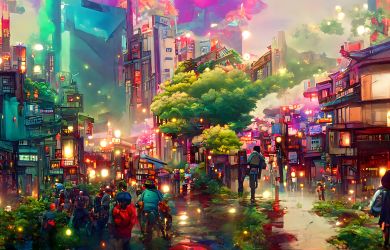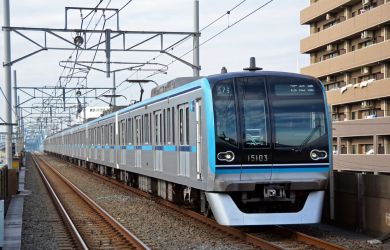
May 27, 2010
Where is Architecture?
MoMAT poses itself a question… and gets lost looking for the answer
By Metropolis
Originally published on metropolis.co.jp on May 2010

The New Deichman Main Library Competition in Oslo, Norway, 2008-2009, Image courtesy of Kuramochi + Oguma
Architects are busy people. If they are any good, they have a constantly growing client list and rigorous standards to maintain; if not, they are out of their depth, struggling to keep up the demanding pose that being an architect involves. Either way, they are not people of leisure.
This is something that should be borne in mind when going to see “Where is Architecture?” at the Museum of Modern Art, Tokyo. The basic idea of the show—to ask and answer the eponymous question by inviting seven of Japan’s top architects to create installations—sounds good on paper. But, after viewing the exhibition, I was left with the impression that most of the invited architects didn’t really interrupt their busy schedules that much, and instead merely threw together some things they had lying about their offices, or rehashed some old presentation ideas.
Ryoji Suzuki, an architect who designs futuristic private residences and small office buildings, contributes what looks like an architectural model blown up to actual size. Although mildly amusing, the concept isn’t worth all the effort and materials spent realizing it.
Hiroshi Kikuchi’s effort reveals greater imagination. Using a tiny architectural model and a rotating light source, he simulates the way sunlight interacts with the angles and windows of a building in miniature. This is filmed and scaled up via projection to create a life-sized light show, showing the correlation between architectural models and reality. But despite the fantastic idea, the contraption itself is not well-designed and the results not particularly inspiring to watch.

Toyo Ito, Inside In, 2010, installation view, Photo by Miki Komura
The fact that Kikuchi clearly spends more of his time in university lecture halls than on building sites or at the drawing board also raises questions about the worthiness of the architects in the exhibition. Another participant, Ryuji Nakamura, seems to be more of a furniture and interior designer than an architect, and although his contribution—a spiky-looking geometric hedge made from thin, vulcanized paper sticks—is interesting, one starts to wonder whether the show’s titular question is perhaps directed at the wrong people.
One of the better pieces is Hideyuki Nakayama’s “Door on the Prairie.” Some effort seems to have gone into realizing this work, which imagines how a giant door would look before scaling it down to a normal-sized one. Nakayama imagines the door as the facade of a park building used for storing folding chairs and tables; as it is reduced, so are the items of furniture. Yet even though this is one of the better-made pieces, it feels more like artistic whimsy than nitty-gritty architecture.
The show’s saving grace comes from Toyo Ito, by far the best known and busiest of all the participants. In contrast to the half-baked feeling of the rest of the exhibition, Ito presents a kind of show within a show. The installation is based on his innovative but unsuccessful design for the New Deichman Main Library building in Oslo. Ito proposed a design using three types of polyhedron, which have been scaled down here to create a version of the library that the viewer can still walk through; instead of Nordic books, the multi-angled space houses several exhibits detailing aspects of the architect’s career.
Ito is known for an approach that tries to marry geometrical precision with an organic feel, like his design for the Taichung Opera House in Taiwan (now under construction), which perforated a rectangular solid with tubes, creating cave-like spaces within the building. His design for the Tama Art University Library (2007) achieved a similar organic feel by using intersecting arches. Both these projects are represented in miniature, along with three others from Ito’s distinguished career.
So, why is the busiest architect’s contribution also the best? Probably because the best architects usually have the best assistants.
The National Museum of Modern Art
Where is Architecture? Seven Installations by Japanese Architects. Until Aug 8, free (HS and under)/¥450 (univ)/¥850 (adult). 3-1 Kitanomaru Park, Chiyoda-ku. Tel: 03-5777-8600 (Hello Dial). Open Tue-Sun 10am-5pm (Fri until 8pm), closed Mon. Nearest stn: Takebashi, exit 1B. www.momat.go.jp





